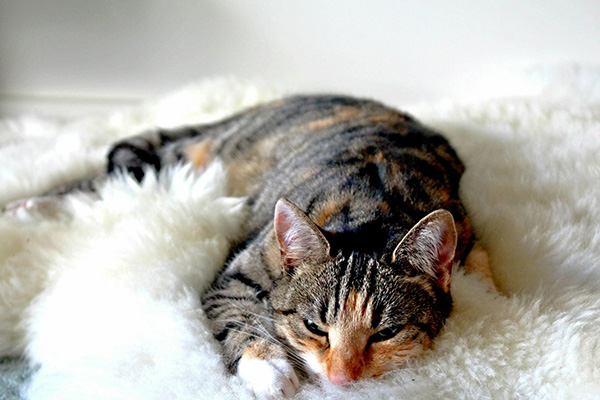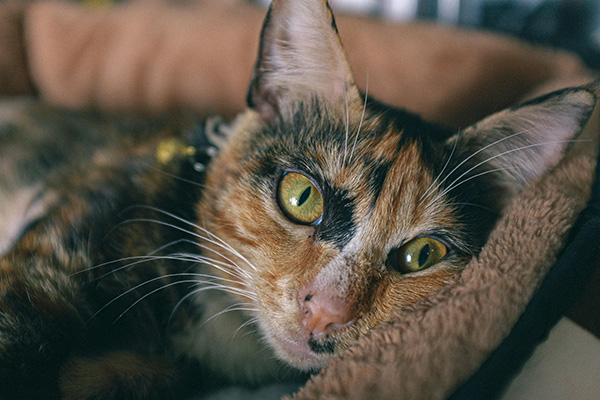Calico and tortoiseshell cats are often mistaken for one another due to their striking, multi-colored coats, but their tortoiseshell or calico markings have distinct characteristics that set them apart. Whether you're a devoted cat enthusiast or considering adopting one of these stunning felines, understanding their unique patterns, genetics, personalities, and care needs is essential. From the bold, patchy patterns of calicos to the intricate, blended hues of tortoiseshells, each cat carries its own charm and individuality.
In this guide, we'll explore everything you need to know about tortoiseshell and calico markings, helping you appreciate the beauty and uniqueness of these extraordinary multicolored cats.
Cat Breeds
One important thing to understand about both tortoiseshell and calico cats is that neither is technically a breed. Instead, 'tortoiseshell' and 'calico' are terms used to describe specific coat colors and patterns. These patterns can appear in various cat breeds, such as the Maine Coon or Japanese Bobtail, which can showcase calico coloration. Over time, the distinctive and eye-catching appearances of the tortoiseshell and calico cats have made them quite notable, leading some people to refer to them as if they were breeds. However, they are simply coat patterns that can be found across many breeds, adding to their unique charm and widespread appeal.
Differences Between Tortoiseshell and Calico Cats

Coat Color and Coat Pattern
The primary difference between calico and tortoiseshell (tortie) cats lies in their coat color patterns. Calico cats are easily recognized by their distinctive tri-color fur, typically featuring a mix of white, black, and orange—or in lighter variations, gray and cream. The white is a defining feature, often covering a significant portion of their body and creating a base for the black and orange patches. These patches are usually large and distinct, giving calicos a bold, patchwork-like appearance. The white fur is caused by a gene that prevents pigment from forming in certain areas, resulting in a striking contrast between the colored patches and the white background. This cat breed can also have variations like "dilute calicos," where the colors are softer (gray and cream instead of black and orange).
Torties, on the other hand, are two-colored, blending black and orange (or gray and cream in dilute torties) in a marbled or mottled pattern. Unlike calicos (tri-color cats), torties typically have little to no white patches in their coats. Their colors are intricately mixed, often resembling the swirls of a tortoiseshell material, which is how they got their name. Torties can also exhibit "torbie" patterns, where the classic tortoiseshell colors are combined with tabby markings, adding another layer of complexity to their coats.
Genetics
The genetic distinctions between calico and tortoiseshell cats are intriguing, stemming from how their coat colors develop and are expressed. Both patterns are linked to the X chromosome, but the presence or absence of white fur plays a key role in distinguishing them.
Calico cats have a tri-color pattern of white, black, and orange, caused by the white spotting gene (S), which prevents pigment from forming in certain areas, creating large, distinct patches of white that separate the black and orange areas. Tortoiseshell cats, on the other hand, have a two-color pattern of black and orange (or their diluted forms: gray and cream) without significant white areas, as they lack the white spotting gene or express it minimally. Their colors are blended in a marbled or mottled pattern, creating a swirled or speckled effect.
Both calicos and torties are almost always female because the combination of two X chromosomes (XX) is needed to express both orange and black colors. Both calicos or torties male cats are extremely rare (about 1 in 3,000) and usually result from a genetic anomaly called Klinefelter syndrome (XXY). Although it is possible to have the rare male tortoiseshell and calico, it is difficult for cat breeders to reproduce.
Additionally, both patterns can have dilute versions, where the colors are softened to gray and cream. In summary, the key genetic differences lie in the presence of the white spotting gene and the way X-inactivation influences their coat patterns, making calicos and torties uniquely beautiful and almost exclusively female.
Personality

Calico and tortoiseshell cats are visually stunning and rich in personality and cultural significance. Calico cats are often described as bold, sassy, and independent. Their vibrant coats seem to match their lively personalities. Many owners report that calicos are confident, curious, and full of energy, often taking charge of their surroundings. They can be affectionate and loving but on their own terms, preferring to initiate cuddles rather than being picked up or held. Calico cats are often recognized for their lively and mischievous personalities, making them fun and engaging companions. However, their strong-willed demeanor means they may not always be the easiest to train, as they prefer to do things their way.
Tortoiseshell cats are well known for their bold and independent personalities, often referred to as "tortitude" due to their spirited and strong-willed nature. These cats are often highly affectionate but can be fiercely independent and opinionated. Torties are known to form deep bonds with their favorite humans, often following them around the house and demanding attention. However, they can also be stubborn and unpredictable, with moods that shift as quickly as the colors in their coats. Many tortie owners describe them as having a "big personality" in a small package, with a mix of sass, loyalty, and charm that makes them unforgettable.
Folklore
Calico cats hold a special place in many cultures, often symbolizing good luck and prosperity. In Japan, they are known as "mi-ke" (meaning "triple fur") and are considered lucky charms. The Maneki-Neko, or "beckoning cat" figurine, is commonly portrayed as a calico and is thought to bring prosperity to homes and businesses. In the United States, calico cats are sometimes referred to as "money cats" due to their connection with luck and wealth. Sailors also believed that a calico cat would protect their ship from storms and ensure a safe voyage.
Tortoiseshell cats are often associated with magic and mystery. Celtic folklore believed they brought good luck to their owners and protected homes from evil spirits. In Southeast Asian folklore, tortoiseshell cats were thought to have a sacred origin, said to be born from the blood of a young goddess. In the United States, they are sometimes called "money cats" as well, with the belief that they can attract wealth and prosperity. Their unique, marbled coats have also led to legends that they possess healing powers or can ward off negative energy.
